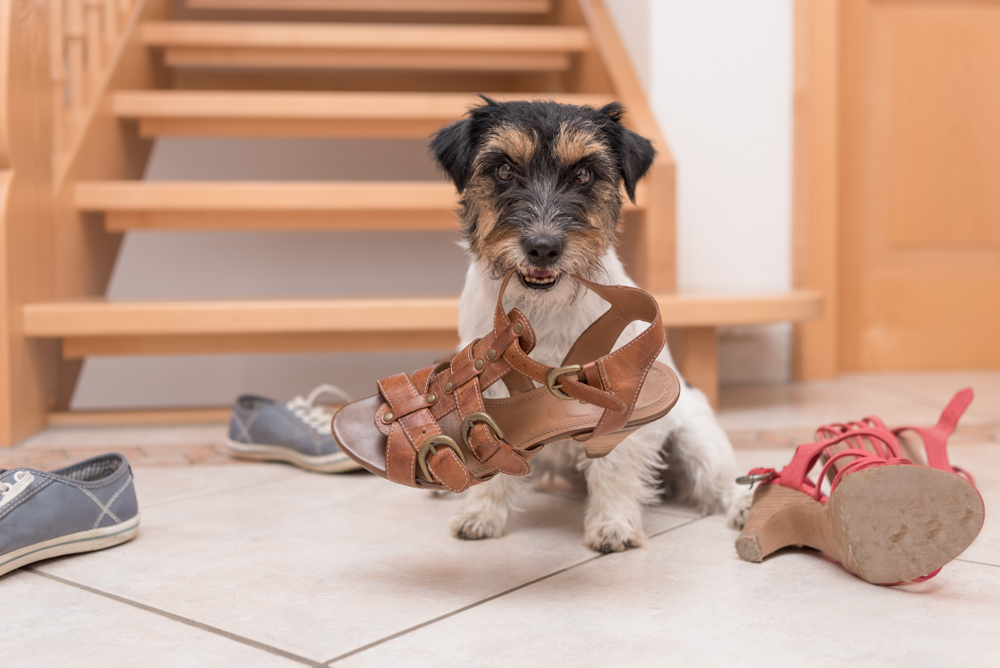Addressing Behavior Problems in Dogs

What steps should you take to address behavior problems in your dog? In a perfect world, our beloved pooches would be wonderful in every way. They would always respond to our commands and never cause trouble. The reality, though, is that most dogs do have a few behavior issues. You can easily address some behaviors with basic training and socialization, but sometimes that isn’t enough. What steps do we take in addressing more serious behavior problems in dogs?
The team at Oakland Veterinary Referral Services is here to address behavior problems in dogs and offer some helpful solutions.
Correcting Behavior Problems in Dogs
Most behaviors that your canine displays, good or bad, are simply behaviors that make sense in the “pack”. These behaviors are sometimes instinctual, but they can also be learned. Certain behaviors we don’t like in our homes are merely expressions of a dog following their pack mentality or how a former owner raised them. The good news is that basic obedience training, retraining or redirection will address most problem behaviors. Others, though, require a professional behaviorist.
- Aggression — Aggression is one of the biggest behavior complaints among dog owners, and with good reason. If left uncorrected, it can lead to injury for you, your dog, or others. Your dog may manifest aggression as teeth bearing and growling or as a full-on attack. Because of the potential threat of an accident, deal with aggressive behavior at once.
Aggressive dogs are reactive. Reach out to local trainers or a practice that offers behavior counseling for help with these reactive behaviors. Aggression often stems from fear so your trainer or behavioral modification counselor will likely focus on increasing your dog’s confidence, trust and feelings of safety as part of reducing the reactivity. Choose someone who uses positive techniques to help your dog feel more confident.
- Fear and Anxiety — While some dogs manifest fear through aggression, others exhibit their fear and anxiety. Some dogs are afraid to go on walks, while others cower and shake near other people or dogs. This is a behavior issue that is best addressed by professionals. Seek out training specifically for anxious dogs (some trainers offer one-on-one and in-home training for anxious dogs) and ideally pair training with behavior modification counseling.
- Barking — Barking is something most dogs do and enjoy, but when it becomes incessant, you have a behavior problem. When you scold your pet for barking, you may not realize that you’re actually reinforcing their barking. One of the ways to redirect this issue is to teach them to bark. Yes, that’s right. If you teach your pet to bark on command, then teach them with the “quiet” or “shh” command, and finally reward them after they stop barking, you are reinforcing their silence. This is a behavior you can train on your own or reach out to a local dog trainer. Be consistent with this training and be patient, as you will need time to get your dog used to these new commands.
- Digging and chewing — These two behaviors are sometimes a result of separation anxiety or boredom if you leave your pet alone for long periods of time. Digging and chewing are natural behaviors, and many pets enjoy them, but obviously it can become a problem. Digging may also increase your pet’s risk of escape. Redirect digging and chewing by giving your pet an area to dig in, or things they can chew on instead of a shoe, for example. Reward them with verbal praise or treats for choosing the new correct area to dig in or thing to chew on. This is another behavior you can potentially address at home.
Other common problem behaviors include the list below and can be addressed through professional training with the best results from individual training:
- Leash pulling
- Jumping up
- Resource guarding
- Begging
- Whining
- Not responding to commands
Addressing Behavior Problems in Dogs
If your dog is experiencing problem behaviors, the first order of business is to make sure there isn’t a health issue at play. Behaviors such as these can be a result of pain. That is why a checkup with your veterinarian can both examine your pet for possible health concerns and give you a chance to ask questions about the behavior.
If the problem behaviors are not a health issue, we recommend these options:
- Seek out a trainer who offers group, one-on-one and/or in-home training for reactive or anxious dogs
- Schedule a behavior consultation with a veterinarian trained in behavior modification
- If your dog’s problem is more severe, we recommend consulting a professional trainer or veterinary behaviorist. The behavioral team at OVRS offers consultation to address several behavior issues.
Discouraging Problem Behaviors at Home
At-home ways to help discourage or redirect a problem behavior:
- Make sure your pet has things to do while you are away. Many bad behaviors are a result of boredom. Give your pet interactive games, such as food puzzles and toys, and make sure you are exercising your pet 20-30 minutes each day.
- Discourage the behavior by using redirection (to the preferred behavior, or the behavior you want to see) along with positive reinforcement (rewarding your pet with treats and praise) for the desired behavior.
- Make sure your pet has had basic obedience training and socialization.
- Don’t react to bad behavior with punishment, as this will reinforce the behavior, in most cases.
Don’t feel alone in dealing with your dog’s behavior issues, or simply try to deal with them without help. Often they can be corrected, allowing you a closer bond with your canine friend. Look for behavior resources in your area or for more information, please contact us.


